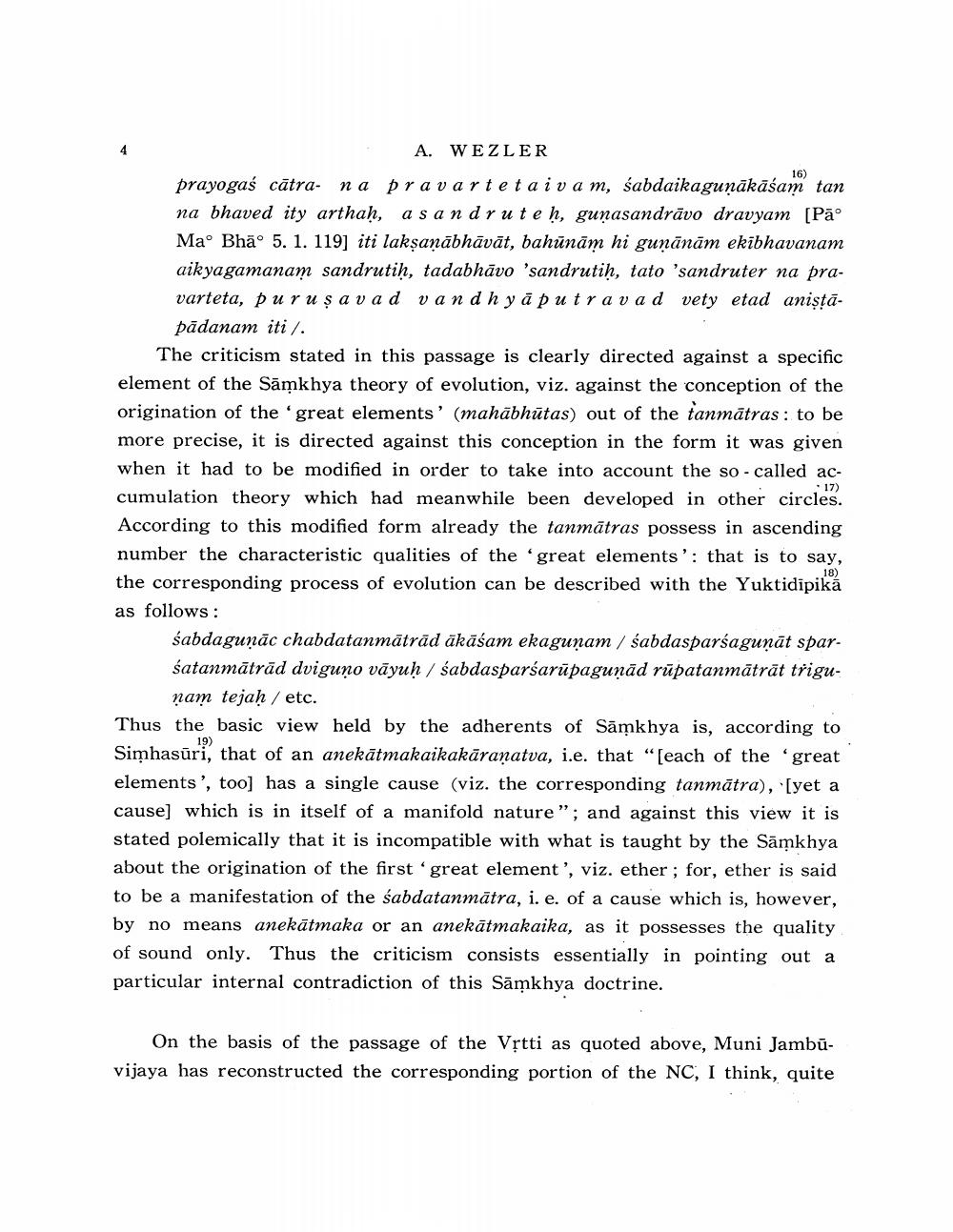Book Title: Note On Mahabhasya II 366 26 Gunasamdravo Dravyam Author(s): A Wezler Publisher: A Wezler View full book textPage 4
________________ A. WEZLER prayogas catra- na pravarteta i v a m, sabdaikagunakasam tan na bhaved ity arthah, as a n d rute h, gunasandravo dravyam [Padeg Mao Bhadeg 5. 1. 119] iti laksanabhavat, bahunam hi gunanam ekibhavanam aikyagamanam sandrutih, tadabhavo 'sandrutih, tato 'sandruter na pravarteta, pur u s a v a d van d h ya putra v a d vety etad anistapadanam iti /. The criticism stated in this passage is clearly directed against a specific element of the Sankhya theory of evolution, viz. against the conception of the origination of the 'great elements' (mahabhutas) out of the tanmatras: to be more precise, it is directed against this conception in the form it was given when it had to be modified in order to take into account the so-called accumulation theory which had meanwhile been developed in other circles. According to this modified form already the tanmatras possess in ascending number the characteristic qualities of the 'great elements': that is to say, the corresponding process of evolution can be described with the Yuktidipika as follows: sabdagunac chabdatanmatrad akasam ekagunam / sabdasparsagunat sparsatanmatrad dviguno vayuh / sabdasparsarupagunad rupatanmatrat trigu nam tejah / etc. Thus the basic view held by the adherents of Samkhya is, according to Simhasuri, that of an anekatmakaikakaranatva, i.e. that "[each of the 'great elements', too] has a single cause (viz. the corresponding tanmatra), '[yet a cause] which is in itself of a manifold nature"; and against this view it is stated polemically that it is incompatible with what is taught by the Samkhya about the origination of the first great element', viz. ether ; for, ether is said to be a manifestation of the sabdatanmatra, i. e. of a cause which is, however, by no means anekatmaka or an anekatmakaika, as it possesses the quality of sound only. Thus the criticism consists essentially in pointing out a particular internal contradiction of this Samkhya doctrine. 18) On the basis of the passage of the Vstti as quoted above, Muni Jambuvijaya has reconstructed the corresponding portion of the NC, I think, quitePage Navigation
1 2 3 4 5 6 7 8 9 10 11 12 13 14 15 16 17 18 19 20 21 22 23 24 25 26 27 28 29 30 31 32 33
